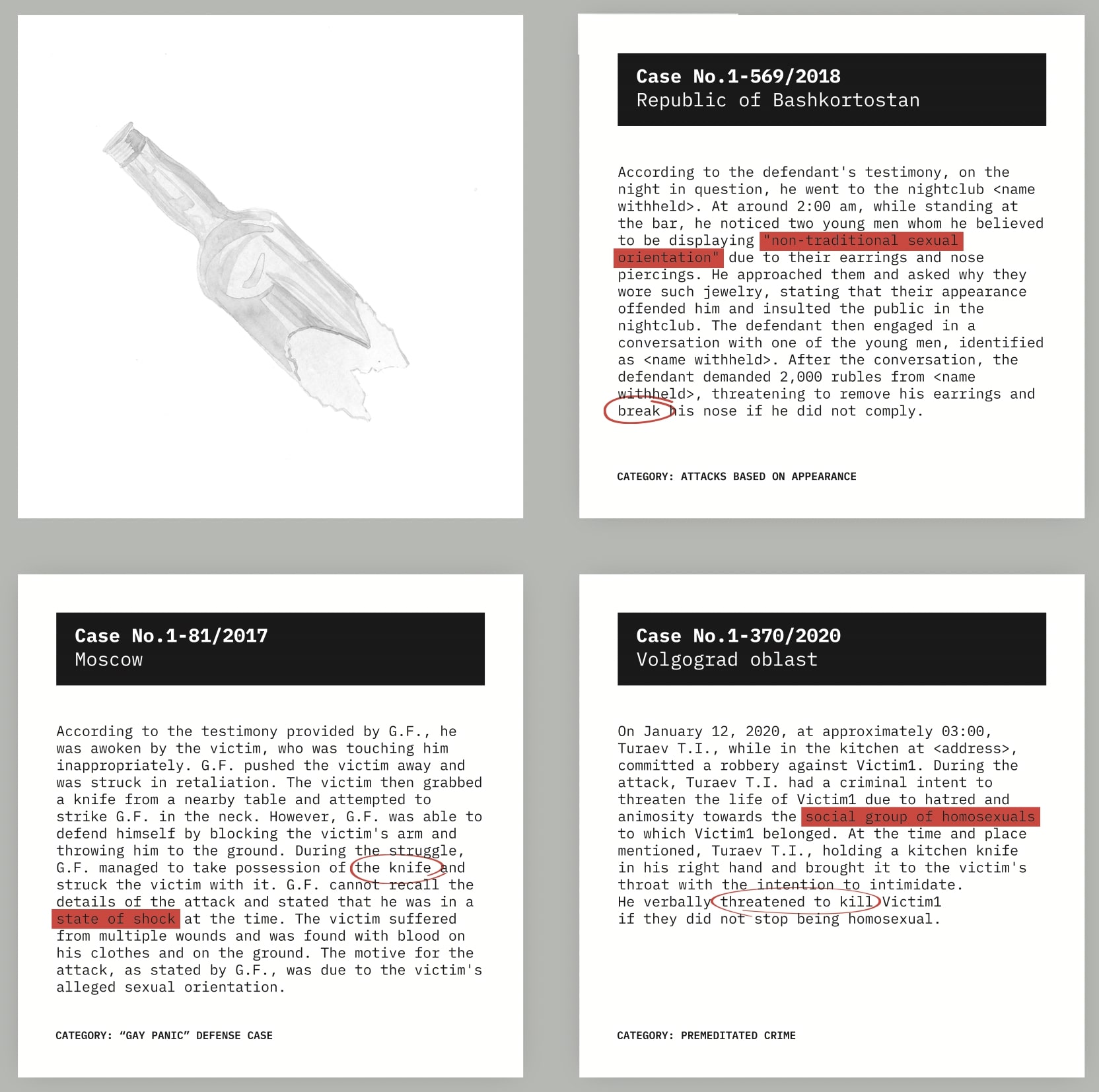Hate crime and visual art: Telling the stories of the unknown victims
Background:
The art project is based on the research on hate crimes against LGBTQ in Russia. 10 years ago in June 2013 the Russian government introduced legislation that was commonly referred to as the “gay propaganda law”. This legislation restricted LGBTQ in their rights and had adverse societal effects – the increase in hate crimes. Hate crime is a criminal offense motivated by prejudice towards a social group. In Russia, this prejudice is encouraged by the authorities. This provoked a chain reaction when hundreds of random people around the country (sometimes with the help of authorities) decided to kill gay people.
The Russian government does not record hate crimes against LGBTQ. Moreover, the authorities make statements like “We don't have those kinds of people here. We don't have any gays. You cannot kill those who do not exist”. The purpose of the research was to prove it wrong. In order to do that the researchers generated a database of such crimes which included 1056 cases. Those are the real people and real crimes that do exist.
The research project worked with texts of thousands of court judgments on hate crimes against LGBTQ. Those crimes are invisible for the public, neglected by the authorities and not mentioned by the media. The artwork represents an attempt to bring these crimes to light.
The artwork:
The main artwork is a big PVC banner (5x1 meters). The banner is a compilation of short texts, divided by gridlines. The unusually big size of the artwork allows to include as many hate crime stories as possible. While some texts are presented in full, others do not fit on the banner, leaving the reader with an impression that there are indeed thousands of them somewhere out there.
Choosing a banner as a medium can be considered unconventional and "inappropriate". This highlights the marginalized nature of the hate crime stories, which cannot be told through conventional mediums.
Every story presented is real and derived from court judgments discovered by the researchers.
Illustrations: Polina Zaslavskaya
Design and Concept: Barbara Masson






